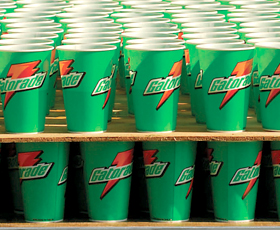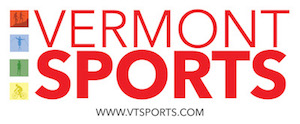Exercise-Associated Hyponatremia
Posted June 6th, 2008

In just the past few years, the Boston and New York City marathons brought exercise associated hyponatremia (EAH) into headline news. The potentially life-threatening condition is a blood sodium depletion caused by excessive fluid consumption. The pathological processes are still not completely understood, but to put it simply, the sodium concentration in the plasma drops, resulting in a chemical imbalance. In endurance athletes, there is little doubt that EAH is associated with drinking too much. A study at the 2002 Boston Marathon revealed that 13 percent of the 488 athletes examined experienced EAH. Other investigations that included ultra marathoners and triathletes also resulted in alarming samplings of athletes suffering from EAH.
A BRIEF HISTORY
EAH was first described in 1981 and then again with more detailed information in 1985. It was associated with endurance events such as the marathon,ultra-marathon, triathlon, and any athletic activity taking more than seven hours. Prior to 1981, endurance athletes were instructed to restrict water consumption during the race; this led to dehydration, and potentially severe, irreversible kidney damage. The restriction trend then drastically changed, and athletes were encouraged to consume as much water as possible. Recommendations varied, but usually ranged from 12 to 48 ounces per hour.
As the marathon became more popular, EAH became more prevalent. Today, it is the most common medical complication of long-distance running. Early symptoms include confusion, altered mental status, lethargy, weakness, dizziness, headache, and vomiting. Who hasn’t suffered from some of these conditions in a marathon? Hitting the wall at 20 miles may very well be caused by hyponatremia. Severe symptoms are dreadful and can cause death.
RISK FACTORS
Should you drink and suffer the effects of over-hydration, or restrict fluids and suffer from dehydration? The endurance athlete can get caught between the proverbial rock and a hard place. Women are more likely to develop EAH than men. This may be simply due to their willingness to follow plans or protocols more precisely, but the increased predisposition may have a hormonal basis of estrogen and progesterone inhibiting the functions of sodium and potassium. Hyponatremia is also correlated with an athlete’s experience in endurance events, including training pace, race pace, and duration of the event. The runners with the slowest pace and least experience have significantly higher risk for EAH. Studies are ongoing and now it is thought that the use of NSAIDS may be a catalyst in the onset of over-hydration. The risk factors are so great that race organizations are being asked to have onsite ability to perform serum or plasma sodium analysis.
PREVENTING HYPONATREMIA
Medical groups are making new recommendations based on research gathered from marathons and other endurance events. In conjunction with the USA Track and Field Committees, they have established new guidelines. Education and individual information is key to the prevention of EAH. Consuming 400 to 800 ml/hour of fluid during exercise is being recommended, with the higher limit suggested for heavier runners and with events occurring in warmer, more humid weather. The mantra of “drink early/drink often” has been replaced with “drink only according to thirst and not more than the recommended 400-800ml/hour.”
The most accurate measurement of an athlete’s individual fluid need can be measured best by gathering serial information during training runs. Your running log can be the best adviser simply by weighing yourself before and after training and noting the weights in your log. This will tell you how much fluid you are losing and how much must be replaced to prevent dehydration or over-hydration. Your log should also keep track of weather, which will, over time, present an accurate accounting of the effects of warmer more humid conditions on your body. There is no evidence that supports the use of salt tablets to prevent EAH. Sports drinks have advertised that they will help in the prevention of EAH, but there is very little evidence that this is true. Your best defense is knowledge and a proactive detailed approach to training and prevention of injury by over-hydration.
SUMMARY
The ideal situation would be that endurance races have the medical facilities to measure serum or plasma sodium concentrations. Until that time arrives, race organizers should train their staff to be alert for the clinical symptoms of EAH. However, this may be impractical and ineffective. The responsibility really falls on the athlete to perform due diligence with training and to know the risks associated with his or her sport.
Keeping a training log is the best-known advantage to any kind of injury prevention, including EAH. You should record everyday stats on your body and the ambient environment, including body weight, weather, and training, with notations on your physical and mental health. I ask every injured athlete who comes into my office about his or her training log. I have found that the lack of this simple and effective tool is the number one cause of over-use injury.
There is no need to rush into running the marathon. The best coaches in the world agree that it takes at least three years of running to make an athlete physically and mentally fit to run 26.2 miles. These years will give you an intimacy for your body’s needs and the abilities to carry you over the “wall” when you get there, and then on to the finish line, happy and in good shape.
